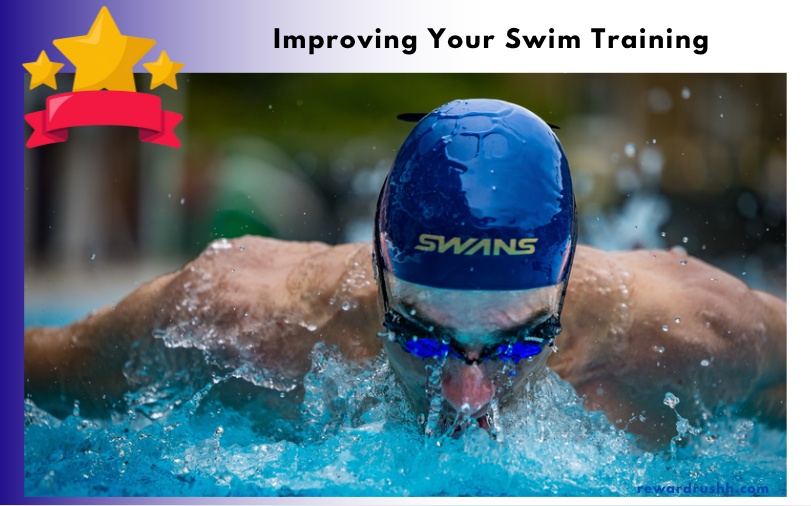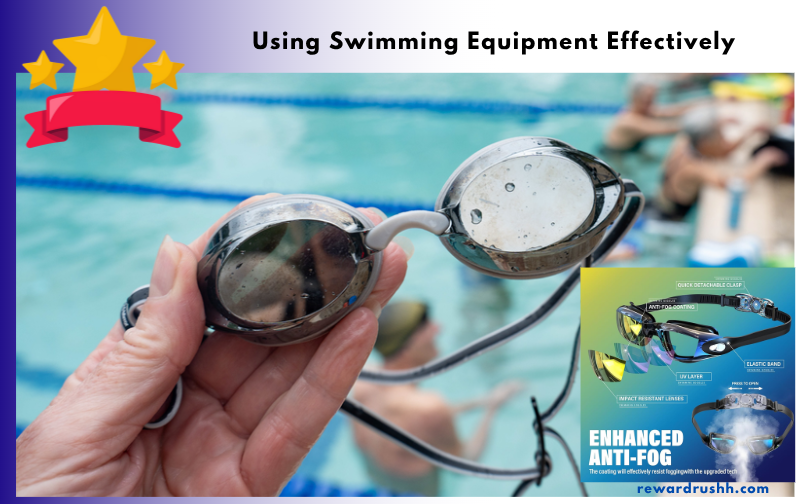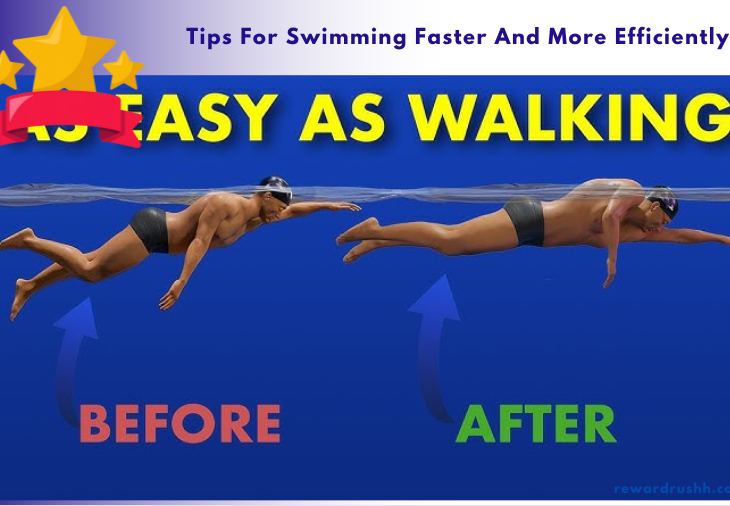Ever feel like you’re churning through the water but not really going anywhere? You’re not alone! Many swimmers struggle with speed and efficiency.
The good news is, with the right techniques and a little dedication, you can glide through the water like a pro. This article dives into practical tips for swimming faster and more efficiently, transforming your swim from a tiring chore into an enjoyable and effective workout. Get ready to unlock your swimming potential!
Mastering Your Swimming Technique
Efficient swimming isn’t just about brute strength. It’s about mastering the art of moving through the water with minimal resistance.
Streamline Like a Missile
The streamline position is crucial for minimizing drag. Think of yourself as a torpedo slicing through the water.
Keep your arms extended overhead, hands clasped together. Your head should be tucked between your arms. Push off the wall with force and maintain this tight, streamlined position for as long as possible.
Perfecting Your Body Position
A horizontal body position is key to reducing drag. Imagine a straight line from your head to your toes.
Avoid letting your hips or legs sink. Engage your core to maintain a level position in the water. Practice floating on your stomach and back to get a feel for proper body alignment.
Optimizing Your Kick
Your kick provides propulsion and helps maintain body position. Focus on a tight, efficient kick rather than a wide, splashing one.
For freestyle, a narrow, flutter kick originating from the hips is ideal. Keep your ankles relaxed and your toes pointed. For breaststroke, focus on a powerful, whip-like kick.
Refining Your Arm Stroke
The arm stroke is your primary source of propulsion. Each stroke phase contributes to forward movement.
Entry: Extend your arm forward, reaching for the water.
Catch: Rotate your hand outward and begin to pull the water.
Pull-through: Pull your hand along your body, maintaining a high elbow position.
Recovery: Lift your elbow out of the water and swing your arm forward.
Enhancing Your Breathing Technique
Proper breathing is essential for maintaining rhythm and avoiding fatigue. Inefficient breathing can disrupt your stroke and slow you down.
Rhythmic Breathing
Establish a consistent breathing pattern. This helps maintain a steady rhythm and prevents you from running out of breath.
Exhale fully into the water, then quickly inhale when you turn your head to breathe. Practice breathing every three strokes for freestyle to develop a balanced stroke.
Bilateral Breathing
Breathing on both sides can improve your stroke symmetry. It prevents you from over-rotating to one side.
Start by breathing every three strokes, alternating which side you breathe on. This will help you develop a more balanced and efficient stroke.
Efficient Exhalation
Complete exhalation is just as important as inhalation. Fully emptying your lungs allows for a more complete and efficient intake of air.
Practice exhaling steadily into the water, creating bubbles. This ensures you’re ready to inhale quickly when you turn your head to breathe.
Improving Your Swim Training

Effective training is essential for improving your speed and endurance. A well-structured training plan can help you reach your swimming goals.
Incorporating Interval Training
Interval training involves alternating between high-intensity bursts and periods of rest. This is a great way to improve your speed and endurance.
Swim short distances at a fast pace, followed by a short rest period. Gradually increase the distance and intensity of your intervals.
Adding Drills to Your Routine
Drills help you focus on specific aspects of your technique. They isolate different parts of your stroke, allowing you to refine your form.
Try fingertip drag drills to improve your arm recovery. Use kickboard drills to strengthen your legs and improve your kick.
Varying Your Workouts
Avoid doing the same workout every day. Varying your workouts prevents boredom and challenges your body in different ways.
Mix up your distances, intensities, and stroke types. This will help you develop a well-rounded swimming ability.
Strength Training for Swimmers
Strength training can improve your power and endurance in the water. Focus on exercises that target the muscles used in swimming.
Pull-ups, push-ups, and squats are great exercises for swimmers. Use resistance bands to mimic swimming motions and strengthen your muscles.
Optimizing Your Diet and Recovery
What you eat and how you recover can significantly impact your swimming performance. Proper nutrition and rest are essential for maximizing your results.
Fueling Your Body
Eat a balanced diet that provides enough energy for your workouts. Focus on complex carbohydrates, lean protein, and healthy fats.
Eat a pre-workout snack to fuel your swim and a post-workout meal to replenish your energy stores. Stay hydrated by drinking plenty of water throughout the day.
Importance of Hydration
Dehydration can significantly impact your performance. It can lead to fatigue, muscle cramps, and decreased speed.
Drink water before, during, and after your swim. Consider using electrolyte drinks to replace lost minerals.
Prioritizing Rest and Recovery
Rest and recovery are essential for allowing your body to repair and rebuild. Overtraining can lead to injury and decreased performance.
Get enough sleep each night. Incorporate rest days into your training schedule. Use techniques like stretching and foam rolling to reduce muscle soreness.
Using Swimming Equipment Effectively

Swimming equipment can enhance your training and help you focus on specific aspects of your technique. However, it’s important to use equipment properly to avoid injury.
Pull Buoys
Pull buoys help improve your upper body strength and technique. They allow you to focus on your arm stroke without using your legs.
Place the pull buoy between your thighs and focus on pulling yourself through the water. This will help you develop a stronger and more efficient arm stroke.
Kickboards
Kickboards isolate your leg muscles and improve your kick technique. They allow you to focus on your kick without worrying about your arm stroke.
Hold the kickboard with your arms extended and kick from your hips. Focus on a tight, efficient kick rather than a wide, splashing one.
Fins
Fins can increase your speed and power in the water. They can also help improve your ankle flexibility.
Use fins during drills to focus on your kick technique. Be careful not to overuse fins, as they can lead to muscle strain.
Paddles
Paddles increase the surface area of your hands, which can improve your strength and power. They can also help you feel the water better.
Use paddles during drills to focus on your arm stroke technique. Start with small paddles and gradually increase the size as you get stronger.
Maintaining Motivation and Setting Goals
Staying motivated and setting realistic goals are essential for long-term success. Without motivation, it’s easy to lose interest and give up.
Setting Realistic Goals
Set achievable goals that challenge you but are also attainable. This will help you stay motivated and track your progress.
Start with small goals and gradually increase the difficulty as you improve. Celebrate your successes along the way.
Tracking Your Progress
Track your workouts and monitor your progress. This will help you see how far you’ve come and stay motivated.
Keep a training log and record your times, distances, and intensities. Use a stopwatch or swimming tracker to monitor your performance.
Finding a Swim Buddy
Swimming with a friend can make your workouts more enjoyable and keep you motivated. A swim buddy can provide support and encouragement.
Find someone who has similar goals and abilities. Schedule regular swim sessions together.
Joining a Swim Club
Joining a swim club can provide you with access to coaching, training facilities, and a supportive community. A swim club can help you improve your technique and reach your goals.
Look for a club that fits your needs and abilities. Attend club events and get involved in the community.
Conclusion
Improving your swimming speed and efficiency is a journey that requires dedication, practice, and the right techniques. By focusing on your body position, breathing, stroke mechanics, and training regimen, you can transform your swimming performance. Remember to fuel your body properly, prioritize recovery, and utilize equipment effectively. Stay motivated by setting realistic goals, tracking your progress, and finding a supportive community. Now, dive in and put these tips into practice. What are your favorite swimming tips? Share your experiences in the comments below!
FAQ Section
Q: How often should I swim to see improvement?
A: Aim for at least three swims per week. Consistency is key to improving your technique and endurance.
Q: What’s the best way to improve my breathing technique?
A: Focus on exhaling fully into the water and inhaling quickly when you turn your head. Practice bilateral breathing to improve your stroke symmetry.
Q: What type of strength training exercises are most beneficial for swimmers?
A: Exercises that target the muscles used in swimming, such as pull-ups, push-ups, and squats, are highly beneficial. Resistance band exercises that mimic swimming motions are also great.










